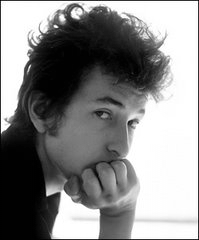Please, no... let's not talk about them...
(But let's just make ourselves feel a little bit better, shall we?...)
Click on the picture below to watch the scene. (7 MB, Windows Media Player required)




The Aviator is many things: It's a film with some great performances, stellar direction, and a compelling story to boot. It has some wonderfully staged effects sequences, gorgeous cinematography, meticulous production design, and an overwhelming sense, throughout the film, that you are in great hands for the next 2 1/2 hours of the story. The Aviator is many things... but it is definitely not the Best Picture of the year. It's not even Scorsese's best picture he's ever done.
I guess the best thing to do is to point out the good things and the bad things about the picture:
GOOD:
BAD:
So, it's not a bad film. It's not a great film. It even scoots past "good" on occasion, riding that line between "You'll remember it next year" and "You'll remember it in 10 years."

 I was thinking about this the other day: It's always been pretty funny to me that people don't realize the anti-military overtones of Forrest Gump... it's subtle, but most people don't pick up on it. What it basically boils down to is the fact that the reason why Forrest excels in the Army is because he's stupid, and isn't smart enough to think for himself.
I was thinking about this the other day: It's always been pretty funny to me that people don't realize the anti-military overtones of Forrest Gump... it's subtle, but most people don't pick up on it. What it basically boils down to is the fact that the reason why Forrest excels in the Army is because he's stupid, and isn't smart enough to think for himself. If you wanted to go back and look at some more of these examples, you would probably start with Stanley Kubrick's Paths Of Glory, a movie that was shocking in its time for its satirizing and condemning of the military. It was banned in France for a long time (it's based on a French military incident), but it's clear that the film is aimed at all nations and all men. Kubrick was also taking a stab at the entire military establishment in general with his satirical look at the kind of mindset required by a person to make such easy choices of life and death.
If you wanted to go back and look at some more of these examples, you would probably start with Stanley Kubrick's Paths Of Glory, a movie that was shocking in its time for its satirizing and condemning of the military. It was banned in France for a long time (it's based on a French military incident), but it's clear that the film is aimed at all nations and all men. Kubrick was also taking a stab at the entire military establishment in general with his satirical look at the kind of mindset required by a person to make such easy choices of life and death.
 The most famous scene of the film comes at the end, where a young captive German woman (played by Susanne Christian, who would later become Kubrick's wife, Christiane Kubrick) is brought out on stage to sing to the French Army. What follows is an extremely moving metaphor for people putting aside differences (language barrier, war status) and living in peace.
The most famous scene of the film comes at the end, where a young captive German woman (played by Susanne Christian, who would later become Kubrick's wife, Christiane Kubrick) is brought out on stage to sing to the French Army. What follows is an extremely moving metaphor for people putting aside differences (language barrier, war status) and living in peace. Years later, in 1987, Kubrick returned to make a completely different kind of war film. Full Metal Jacket examined not the utter senselessness that is war, but instead the emotional destruction that comes with being in the military. The wonderful opening sequence, edited in-synch with the music, shows the soldiers, one by one, getting their heads shaved. The sequence is brilliantly conceived. These are not men, these are not soldiers - these are cattle, brought in and systematically readied for the fight.
Years later, in 1987, Kubrick returned to make a completely different kind of war film. Full Metal Jacket examined not the utter senselessness that is war, but instead the emotional destruction that comes with being in the military. The wonderful opening sequence, edited in-synch with the music, shows the soldiers, one by one, getting their heads shaved. The sequence is brilliantly conceived. These are not men, these are not soldiers - these are cattle, brought in and systematically readied for the fight. This idea is further explored later on, as we see that Pyle, a screw-up from the first day and a person that couldn't do anything right, only really succeeds as a soldier after he starts to lose everything that makes him a human being.
This idea is further explored later on, as we see that Pyle, a screw-up from the first day and a person that couldn't do anything right, only really succeeds as a soldier after he starts to lose everything that makes him a human being. And of course, everything is summed up in the end when Kubrick makes a final statement, this time not just on war or the military, but a statement on mankind itself.
And of course, everything is summed up in the end when Kubrick makes a final statement, this time not just on war or the military, but a statement on mankind itself.












